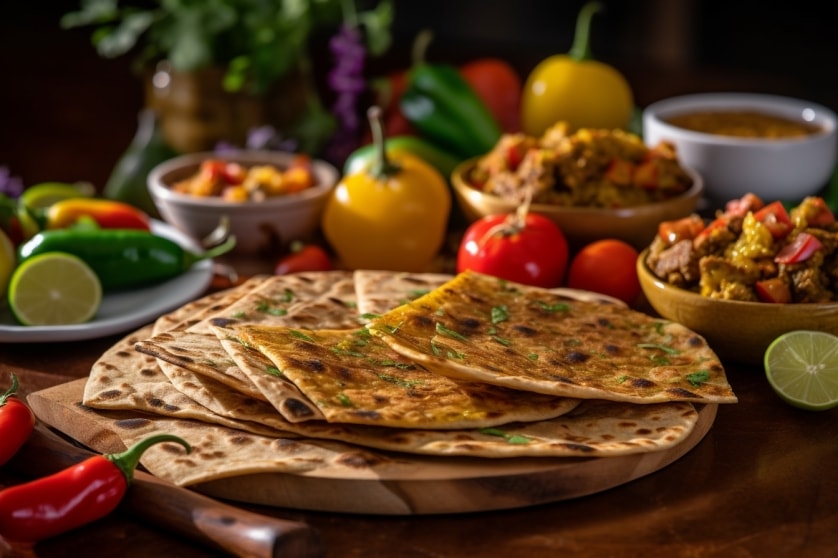Table of Contents
ToggleTrinidadian Roti for Babies: A Flatbread with Curried Meat or Vegetable Filling
Introduction:
Get ready to embark on a flavor-filled journey that will delight your little one’s taste buds and introduce them to the vibrant world of Trinidadian cuisine. As a successful woman family care blogger and author with a Caribbean background, I am thrilled to share with you the wonders of Trinidadian Roti for babies! Brace yourself for a culinary adventure that blends tradition, culture, and a pinch of baby cuteness.
Picture this: you’re sitting at a family gathering in the heart of the Caribbean, surrounded by the mouthwatering aroma of spices wafting through the air. Laughter fills the room as generations come together to savor a beloved dish – Trinidadian Roti. This flatbread, wrapped around a delectable curried meat or vegetable filling, holds not only flavors but also stories passed down through time. It’s a treasure trove of cultural heritage, and we’re about to unlock its secrets for our little ones.
Now, why should we venture into the world of homemade baby food? Oh, the possibilities are endless! When we prepare our baby’s meals from scratch, we have complete control over the quality and freshness of the ingredients. We can ensure that our little ones receive all the necessary nutrients while exploring a world of exciting flavors. Plus, let’s not forget the joy and satisfaction of witnessing our babies’ delighted faces as they experience new tastes and textures!
So, my fellow culinary adventurers, let’s don our aprons and take our babies’ taste buds on a journey they’ll never forget. As we delve into the realm of Trinidadian Roti, we’ll discover how food can be a gateway to heritage, a celebration of diversity, and an opportunity to create lasting family memories.
But wait, before we dive into the recipe and preparation tips, let me share a little secret. Introducing spices to our little ones doesn’t have to be overwhelming. We’ll take it slow, one tiny spoonful at a time. After all, we want our babies to savor the flavors of life without any tears or tantrums!
Now, tighten those apron strings and get ready to whisk your way into the magical world of Trinidadian Roti for babies. This is one culinary adventure you won’t want to miss!

Section 1: Background of Trinidadian Roti
Let’s take a scrumptious journey back in time to unravel the rich tapestry of Trinidadian Roti. This delightful flatbread has its roots firmly planted in the soil of Indian cuisine, but oh, how it has blossomed in the Caribbean sun! Prepare to be amazed as we uncover the fascinating story behind this beloved culinary treasure.
Legend has it that Trinidadian roti made its way to the island in the late 19th century, carried lovingly by Indian indentured laborers who were brought to work on sugar plantations. These skilled cooks brought with them their culinary traditions, and with each fragrant waft of spices, Trinidad’s taste buds were forever changed.
So, what makes Trinidadian roti so unique? It all starts with the dough. Flour, water, a touch of oil, and a sprinkle of salt come together in a symphony of flavors. But wait, there’s more! One cannot discuss Trinidadian roti without mentioning the split peas. Yes, you heard right – split peas. These tiny legumes are cooked until tender, ground into a smooth paste, and incorporated into the dough, adding a hint of sweetness and a velvety texture that will make your baby’s taste buds dance with joy.
But the magic doesn’t stop there, my friends. The real charm of Trinidadian roti lies in its versatility. There are various types of roti to tantalize your taste buds and leave you craving more. Let’s start with the classic – the one and only dhalpuri. Picture a thin, delicate roti lovingly filled with a savory, spiced puree of split peas, known as dhal. As you take a bite, the flavors mingle and dance on your tongue, creating a symphony of deliciousness.
And then we have paratha. Ah, paratha! This buttery, flaky roti is a delight to behold. It’s made by folding and rolling layers of dough, creating a pastry-like texture that will melt in your mouth. The layers soak up the flavors of the curried filling, resulting in a match made in culinary heaven.
Trinidadian roti has become an emblem of comfort food, a symbol of unity, and a testament to the diversity that defines Caribbean culture. It brings families together around the table, with each member savoring their favorite variation of this beloved dish. Whether you’re enjoying it with curried chicken, tender beef, or a medley of vibrant vegetables, Trinidadian roti has the power to nourish not only the body but also the soul.
So, dear culinary explorers, grab your aprons and roll up your sleeves. We’re about to embark on a magical adventure, where heritage meets flavor and tradition embraces innovation. Get ready to create memories, one delectable bite at a time!
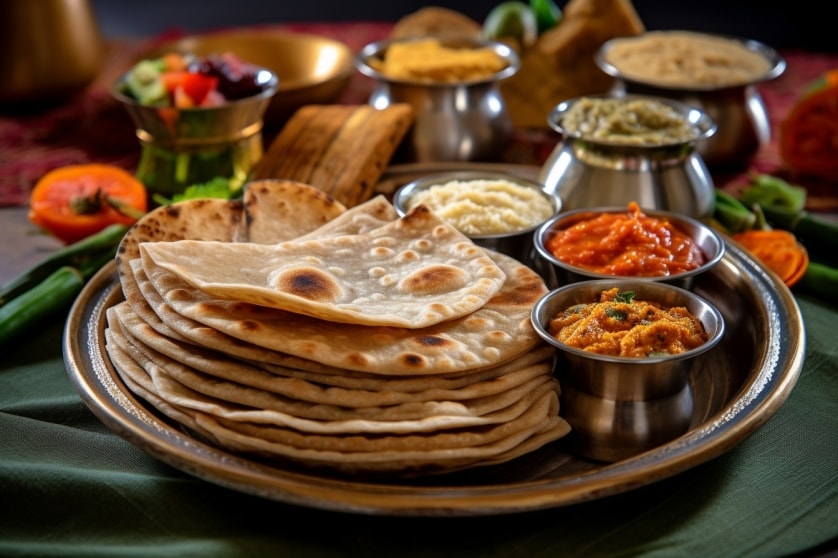
Section 2: Interesting Facts about Trinidadian Roti
Hold on to your taste buds, my friends, because we’re about to uncover some tantalizing tidbits about Trinidadian roti that will leave you craving more! This humble flatbread has a story to tell, and trust me, it’s one you won’t want to miss.
Did you know that Trinidadian roti is a melting pot of flavors, influenced by various cultures that have left their mark on the Caribbean? It’s like a flavor fiesta where Indian, African, Chinese, and Middle Eastern cuisines come together to create something truly extraordinary.
Let’s start with the Indian influence. When Indian indentured laborers arrived on the shores of Trinidad, they brought with them their culinary traditions, including their beloved roti. As the years passed, Trinidadian roti evolved and embraced the local ingredients and spices, creating a unique fusion of Indian and Caribbean flavors.
But that’s not all! Trinidadian roti also owes a debt of gratitude to the African community. The introduction of curried meats, known as curry goat or curry chicken, became an integral part of Trinidadian cuisine, infusing the roti fillings with a burst of bold flavors and hearty goodness.
Let’s not forget the Chinese influence! The Chinese community in Trinidad introduced their own take on roti, known as fried bake. This scrumptious variation is a crispy, golden delight that pairs perfectly with savory fillings, creating a tantalizing contrast of textures.
And last but certainly not least, we have the Middle Eastern influence. The addition of popular Middle Eastern spices, such as cumin and turmeric, gave Trinidadian roti an aromatic punch that will transport your taste buds to exotic lands.
Now, here’s a fun fact to impress your friends at your next dinner party: there are different regional specialties within Trinidad and Tobago that add their own unique twist to the beloved roti. For example, in the southern region of Trinidad, you’ll find the famous buss up shut roti, also known as paratha roti. This flaky, buttery roti is shredded into delicate layers, resembling a tattered shirt, hence its catchy name.
On the other hand, in the eastern part of Trinidad, you’ll discover the sada roti. This simple yet delicious roti is made with just flour, water, and a pinch of salt. It acts as the perfect canvas for showcasing the flavors of the curried fillings, allowing them to take center stage.
Trinidadian roti is not just a feast for the taste buds; it’s also a feast for the soul. It symbolizes the vibrant tapestry of cultures that have shaped the Caribbean. It’s a celebration of diversity, a testament to the power of fusion, and a culinary adventure you’ll want to embark on again and again.
So, my fellow food enthusiasts, prepare your palates for a flavor explosion like no other. Trinidadian roti is waiting to dazzle your senses and transport you to a world where cultures collide and deliciousness reigns supreme. Get ready to savor each bite and embrace the joy of discovering new and exciting flavors!
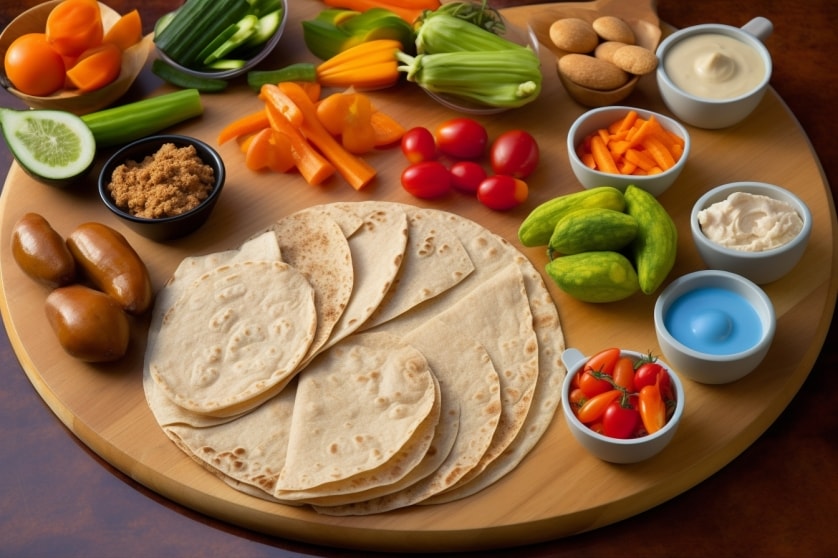
Section 3: Special Baby Preparation Tips
Calling all super-parents! When it comes to preparing Trinidadian roti for your little one, we want to make sure it’s a delightful and safe experience. So, listen up as I share some special baby preparation tips that will have your little foodie gobbling up those roti bites with glee!
1. Start with the basics: Before diving into the world of Trinidadian roti, it’s important to introduce your baby to the individual flavors and spices that make up this delectable dish. Start with milder flavors such as cumin, turmeric, and coriander. Gradually introduce stronger flavors like garlic and ginger as your little one becomes more adventurous. Remember, we’re building a solid foundation of flavor appreciation here!
2. Opt for homemade: While it may be tempting to reach for store-bought roti, consider making it from scratch for your little one. Homemade roti allows you to control the ingredients, ensuring that your baby receives the freshest and healthiest version possible. Plus, the love and effort you put into making it will make each bite even more special!
3. Adjust the spice level: Trinidadian roti can be quite flavorful and spicy, but we want to make sure it’s baby-friendly. Adjust the spice level by reducing or omitting chili powder or hot peppers from the filling. You can always add a touch of mild curry powder or other baby-friendly spices to maintain the deliciousness without overwhelming your little one’s taste buds.
4. Go veggie or meaty: Whether your little one is a budding vegetarian or a meat-loving connoisseur, Trinidadian roti has options for all. For a veggie-friendly version, fill the roti with a colorful medley of vegetables like potatoes, carrots, peas, and spinach. If your baby is ready for meat, consider using tender, slow-cooked chicken or beef, seasoned with baby-friendly spices. The choice is yours!
5. Texture matters: As we introduce solid foods to our babies, texture becomes a crucial element. For younger babies who are just starting their solid food journey, you can mash or finely chop the filling to make it easier to chew and swallow. As your baby grows, you can gradually increase the chunkiness of the filling to help develop their chewing skills. Remember, we’re aiming for a balance between flavor and texture!
6. Embrace messy eating: Let’s face it, when it comes to feeding babies, mess is inevitable. Embrace the messiness of exploring new foods and flavors. Trinidadian roti is the perfect opportunity for your little one to dive in, squish, and explore the different textures. Just make sure you have a bib, some wipes, and a camera ready to capture those adorable messy moments!
7. Encourage self-feeding: As your baby grows older, encourage them to self-feed by offering small, bite-sized pieces of roti. This helps develop their fine motor skills and independence. It might get a little messy (see tip #6), but it’s all part of the fun and learning experience!
Remember, every baby is unique, so adapt these tips to suit your little one’s needs and developmental stage. The goal is to make mealtime a joyful and positive experience, where your baby can explore new flavors, textures, and cultural delights!
So, put on your chef hat and get ready to embark on a culinary adventure with your little one. Trinidadian roti awaits, and with these special baby preparation tips, you’ll be serving up smiles and satisfied taste buds in no time!
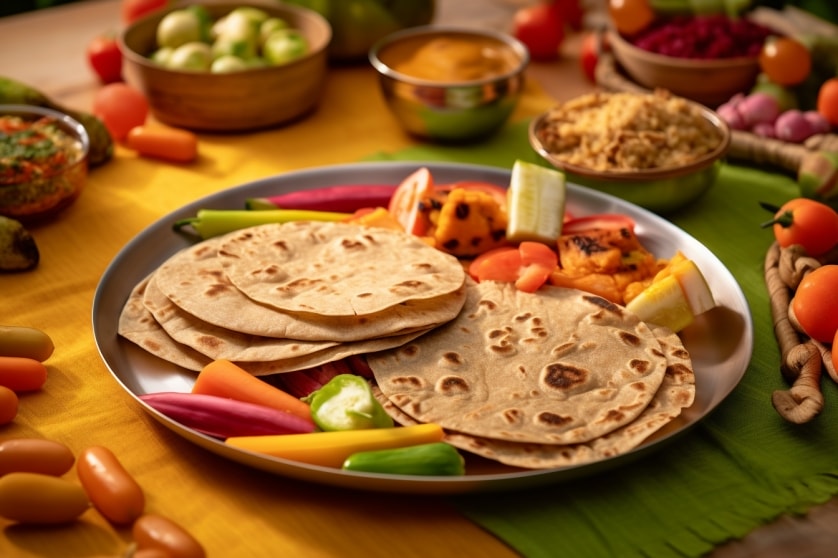
Section 4: Benefits of Trinidadian Roti for Babies
Hold onto your high chairs, parents, because Trinidadian roti is not only a delicious treat for your little one’s taste buds but also packs a punch when it comes to nutritional benefits. Prepare to be amazed as we uncover the secret powers hidden within this delightful flatbread!
1. Power-packed with nutrients: Trinidadian roti is made from wholesome ingredients like flour, water, and split peas, making it a great source of carbohydrates, fiber, and plant-based proteins. These nutrients provide your baby with the energy they need to fuel their growing bodies and support their active lifestyles.
2. Flavorful exploration: One of the joys of introducing new foods to your baby is the opportunity to expand their palate and expose them to different flavors. Trinidadian roti offers a variety of fillings bursting with aromatic spices and a medley of vegetables or tender meats. This flavorful exploration helps develop your baby’s taste buds and encourages them to become adventurous eaters.
3. Digestive-friendly: The combination of split peas and the roti dough provides a good amount of dietary fiber, which promotes healthy digestion for your little one. This can help prevent constipation and keep their tiny tummies happy and comfortable.
4. Building block for cultural appreciation: Food is not just about nourishment; it’s also a gateway to cultural appreciation. By introducing your baby to Trinidadian roti, you’re opening their world to the rich culinary traditions of the Caribbean. It’s a chance to embrace diversity, celebrate different cultures, and foster an appreciation for global cuisine from an early age.
5. Texture exploration: Trinidadian roti offers an exciting range of textures for your baby to explore. From the soft, pillowy roti itself to the filling’s varied consistencies, such as tender meats or the vibrant crunch of vegetables, each bite provides a sensory experience that helps develop your little one’s oral motor skills and their ability to navigate different textures.
6. Versatility in customization: One of the fantastic things about Trinidadian roti is its versatility. You can customize the fillings to suit your baby’s preferences and nutritional needs. Whether you opt for a vegetarian filling bursting with colorful veggies or a protein-rich meaty delight, Trinidadian roti offers endless possibilities to cater to your little one’s taste buds.
7. Family bonding at the dinner table: Mealtime is not just about the food; it’s also about the connections we forge with our loved ones. Trinidadian roti creates an opportunity for family bonding as you gather around the table to share a delicious meal. It’s a chance for storytelling, laughter, and creating cherished memories that will last a lifetime.
So, parents, get ready to witness the wonders of Trinidadian roti in your baby’s culinary journey. From the nutritional benefits and flavor exploration to the cultural appreciation and family bonding, this delightful flatbread offers more than just a satisfying meal. It’s a gateway to a world of flavors, experiences, and shared joy. So, grab a roti, share a smile, and savor the magic that unfolds at the dinner table!
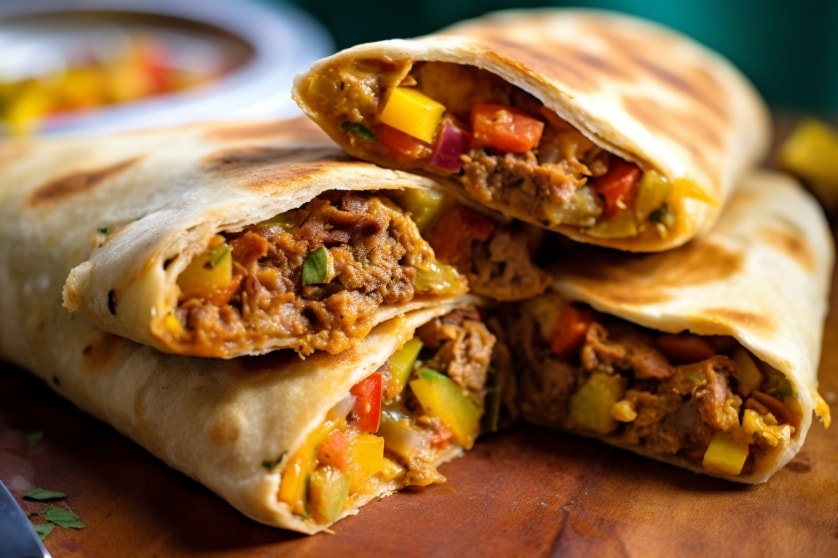
Section 5: Recipe: Trinidadian Roti for Babies
Get ready to put on your chef hat, parents, because it’s time to whip up some homemade Trinidadian roti for your little one! This simple and nutritious recipe will have your baby’s taste buds doing a happy dance. So, roll up your sleeves, gather your ingredients, and let’s get cooking!
Ingredients:
- 1 cup all-purpose flour
- ¼ cup split peas
- ½ teaspoon salt
- ½ cup warm water
- 1 tablespoon vegetable oil
- For the filling:
- Choose one option:
- For a vegetable filling:
- Assorted vegetables (e.g., potatoes, carrots, peas, spinach), chopped
- Mild curry powder or baby-friendly spices
- For a meat filling:
- Chicken or beef, cooked and shredded
- Baby-friendly spices or omit spices for younger babies
Instructions:
- In a bowl, combine the all-purpose flour, split peas, and salt. Mix well.
- Add the warm water gradually and knead until you have a smooth and elastic dough. Let it rest for about 10 minutes.
- Divide the dough into small portions and roll each portion into a ball.
- On a floured surface, use a rolling pin to roll out each ball into a thin, round roti. Remember, we want it to be thin enough for your baby to enjoy without any difficulties.
- Heat a non-stick pan over medium heat and lightly grease it with vegetable oil.
- Cook each roti for about 1-2 minutes on each side, until it puffs up and develops golden brown spots.
- Once cooked, set the rotis aside and keep them warm.
- For the filling:
- If you’re making a vegetable filling, sauté the assorted vegetables in a pan with a little oil until they are tender. Add a sprinkle of mild curry powder or baby-friendly spices to enhance the flavors.
- If you’re making a meat filling, cook and shred the chicken or beef. Season it with baby-friendly spices or omit the spices for younger babies.
- To assemble, place a spoonful of the filling onto each roti and fold it into a half-moon shape. You can secure the edges with a gentle press to keep the filling intact.
- Serve the Trinidadian roti warm and watch your little one’s eyes light up with delight!
Now, sit back and bask in the satisfaction of creating a homemade culinary masterpiece for your baby. The flavors, textures, and love that go into each bite of Trinidadian roti are sure to make this a mealtime favorite.
Remember, you can always customize the filling to suit your baby’s preferences and nutritional needs. Feel free to get creative and explore different combinations of vegetables or proteins. The goal is to create a balanced and delicious meal that your little one will adore.
So, put your apron on, let your culinary creativity soar, and enjoy the joyous journey of preparing Trinidadian roti for your precious bundle of joy. Happy cooking!
Conclusion
Well, folks, we’ve reached the end of our Trinidadian roti adventure for babies. It’s time to reflect on the culinary escapade we’ve embarked upon and the delectable possibilities that lie ahead. Let’s take a moment to savor the journey we’ve shared and celebrate the magic of introducing Trinidadian roti to your little one’s taste buds!
From exploring the rich cultural heritage of the Caribbean to nurturing your baby’s growing appetite for diverse flavors, Trinidadian roti has proven to be a culinary gem. This flatbread, with its soft and pillowy texture, has opened doors to a world of culinary wonders and has given your baby the opportunity to embark on a flavor-packed expedition.
As you prepared Trinidadian roti with love, care, and a dash of Yardie Baby magic, you’ve witnessed firsthand the joy on your little one’s face as they took their first bite. The excitement, the wide-eyed wonder, and the satisfied smiles—all testaments to the power of good food and shared moments around the dinner table.
But our journey doesn’t end here, dear parents. This is just the beginning of a lifelong culinary adventure for your baby. Trinidadian roti has paved the way for future explorations, encouraging your little one to embrace new flavors, textures, and culinary traditions from around the world.
So, as you continue to introduce new foods, remember the lessons learned from this delightful Caribbean flatbread. The background and interesting facts have deepened your understanding and appreciation of Trinidadian cuisine, while the special baby preparation tips have armed you with the knowledge to make mealtime a breeze.
Let’s not forget the incredible benefits that Trinidadian roti offers your baby—the nutrients, the flavor exploration, the digestive-friendly properties, and the building blocks for cultural appreciation. Each bite is a step forward in their culinary development and an opportunity for them to embrace the joys of diverse cuisine.
And finally, armed with the recipe for Trinidadian roti, you have the power to create homemade meals that nourish both body and soul. The ability to customize fillings, experiment with flavors, and share the joy of family bonding at the dinner table is a gift that will keep on giving.
So, my fellow culinary adventurers, embrace the wonders of Trinidadian roti and let your baby’s taste buds be your guide. May every mealtime be a celebration of flavors, love, and the joy of sharing good food with your little ones. Happy cooking, happy eating, and may your kitchen be filled with laughter and delicious aromas!
Until our next delicious escapade, remember that the world of culinary exploration is vast and full of surprises. So, grab your apron, unleash your creativity, and embark on new gastronomic adventures with your tiny foodies by your side. Bon appétit!
Want to take your knowledge to the next level? Check out these must-read articles:
- Haitian Griot for Babies: A Fried Pork and Onion Dish
- Haitian Pikliz for Babies: A Spicy Pickled Cabbage and Carrot Relish
Organize your baby’s wardrobe with our baby clothes closet organizer products! Our organizers are designed specifically for baby clothes. Get your baby’s clothes neat and tidy with our selection of organizers – shop now!
- The Organic Baby Food Debate: What Actually Matters - July 2, 2025
- The Science of Baby Hunger Cues: Reading Your Child’s Signals - April 28, 2025
- Bottle Acceptance Strategies for Breastfed Babies - April 27, 2025

